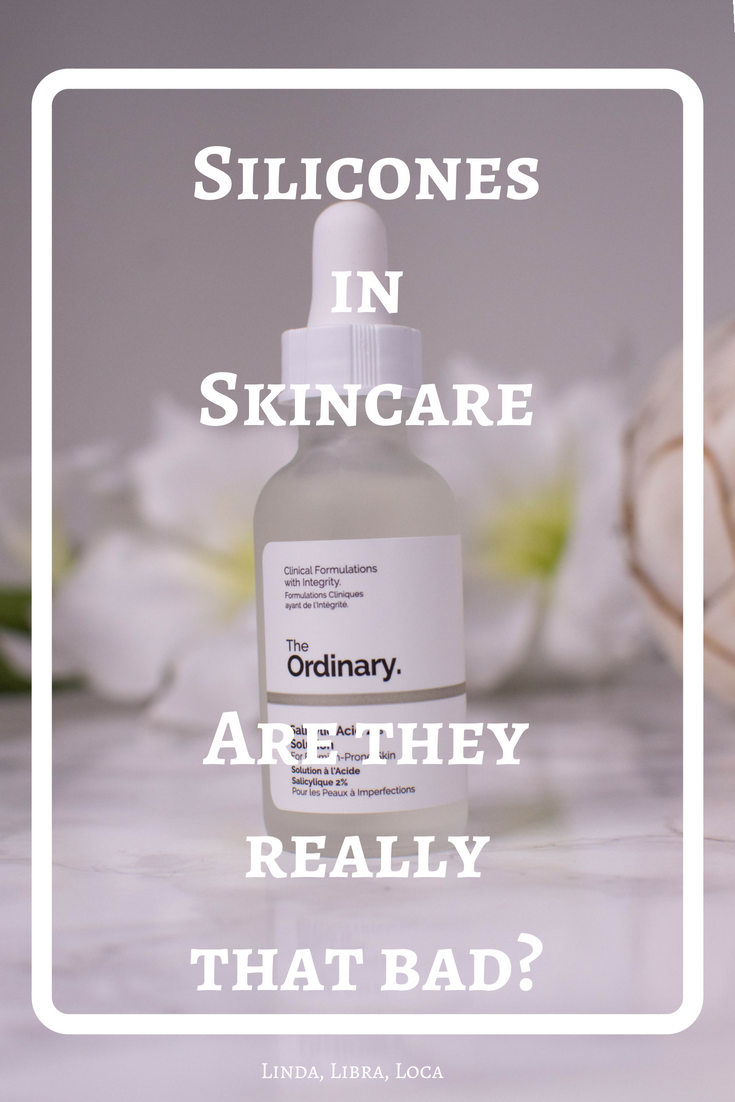Is there an ingredient in skincare that receives more hate than silicones? Probably. SLS, just to name one. Or fragrance, like I recently discovered (here).
But for the sake of style, let´s just asssume that the answer is: No!

And then focus on the fact whether or not the hate that seems to run so deep in the beauty community is actually scientifically backed up.
I mean, you are probably already guessing it by reading this introduction, but let´s approach the discussion with an open mind and see what I have found.
As per usual, I filmed a handy little video on the topic, but if you prefer to have written content to pin for further reference, you will find it underneath. Oh, and please do pin this post, don´t hold back. I appreciate it!
https://youtu.be/MM6caWxEeEs
The basics
In the previous episodes of this series we discussed how skin is build (here), what draws water to the skin (here) and what the difference between emollients and occlusives is (here). If you are caught up on these reads, you´ll remember the following: Emollients repair the lipid holes in the skins barrier, while occlusives form a film on top of the skin, both preventing Transepidermal Water Loss (TEWL).
Types of emollients
There are many different kinds of emollients, but to simplify it you can divide them into two groups: The so called physiological lipids (ceramides, fatty acids and cholesterin), which are build like the lipids our skin produces on it´s own, and the non-physiological lipids, which are silicones.
The difference between physiological and non-physiological lipids
The main difference between both is NOT in the fact that one is man made and the other one is natural, but the chemical structure. A ceramide can be “created” in a laboratory perfectly fine, being man-made, but build after the chemical structure of ceramide occuring in your skin.
Same is true (but off topic) for Insuline. It used to be extracted from animals pancreas and then applied to humans. These days it is produced in the lab, so it is technically man-made, but much safer (and acting the same) as the natural one you would get by squeezing it out of an animal.
So what is the difference then?
Again, the chemical structure. And things with a different chemical structure will do different things in your body. Now we have already established that both do fill the lipid holes that are in our skins upper layer.
But physiological lipids will penetrate deeply into the skin and then will fill up the holes from inside. Non-physiological lipids on the other hand will fill the gaps from the outside, as they are not able to penetrate into the stratum corneum as deeply. They are much closer to the occlusives in where they do work than the physiological lipids are.
Do physiological lipids have extra benefits?
Of course they do. If they hadn´t, our skin would probably be producing silicones instead.
They, among other things:
- regulate the pH level of the skin (and we know how impotant the acid mantle is!)
- stimulate cell renewal
- prevent flaking in larger areas as they glue the cells together from the bottom
And what about silicones?
Believe it or not, they have extra benefits as well!
- They stabilize Avobenzone (UVA-filter)
- They make products water-resistant
- They regulate viscosity, making products feel less rich or heavy
- They reflect light for a soft-focus, pore blurring effect on the skin
- They have a low risk for allergies and no hormonal activity
- Dimethicone is anti-inflammatory and is shown to reduce redness in rosacea
So which one is better now?
None. Or both. It depends on what you need!
If you want a lightweight, non comedogenic and water resistant sunscreen, you need to reach for one that has silicones.
If your skin is severly damaged and you want to increase healing, ceramides and fatty acids are your best friend.
So most of the time, a mixture between both is the way to go. I personally don´t like heavy creams, so the formulas I do enjoy have silicones in them.

What is your take on the topic?